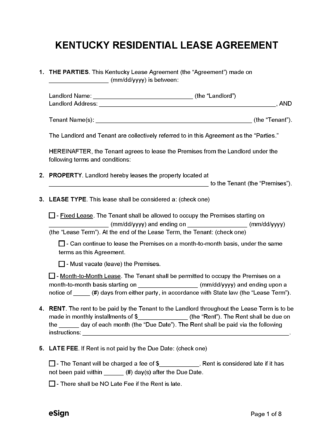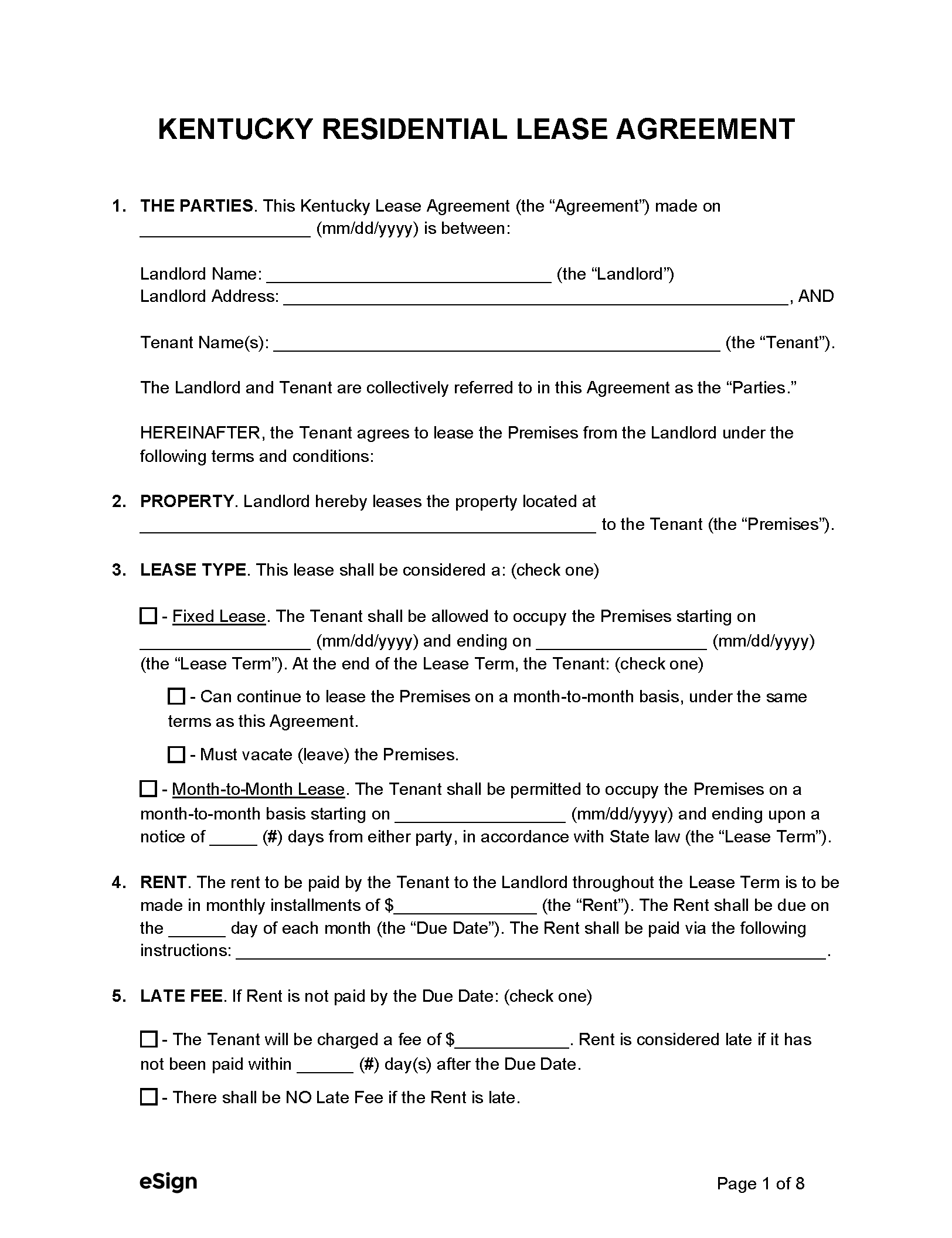
A Kentucky lease agreement is a contract that lays out the terms and conditions for the rental of a commercial or residential property. The document provides proof that both parties are aware of their rights and responsibilities and agree to the rental terms. Both landlord and tenant must sign the bottom of the agreement to render it legally binding.
A Kentucky lease agreement is a contract that lays out the terms and conditions for the rental of a commercial or residential property. The document provides proof that both parties are aware of their rights and responsibilities and agree to the rental terms. Both landlord and tenant must sign the bottom of the agreement to render it legally binding.
PDF Download
A Kentucky lease agreement is a contract that lays out the terms and conditions for the rental of a commercial or residential property. The document provides proof that both parties are aware of their rights and responsibilities and agree to the rental terms. Both landlord and tenant must sign the bottom of the agreement to render it legally binding.
5 | 2 Ratings Downloads: 713
Maximum Amount ($) – There’s no limit to how much a landlord can demand for a deposit.
Collecting Interest – The landlord isn’t required to collect interest on security deposits.
Returning to Tenant – The tenant must collect their security deposit within 60 days of the tenancy’s end, or the landlord may take possession of the funds. [5]
Itemized List Required? – Yes, if any deductions are made to a security deposit, the landlord is required to provide a list of the damages and charges to the tenant. [6]
Separate Bank Account? – The landlord must place the security deposit in a bank account created solely for that purpose.
General Access – For general access to the property, the landlord must provide the tenant with at least two days’ notice. [7]
Immediate Access – The landlord can access the property without notice in an emergency. [8]
Grace Period – Landlords aren’t required to give a grace period for rent payments. [9]
Maximum Late Fees ($) – There’s no set limitation for fees that a landlord may charge for late rent.
Bad Check (NSF) Fee – Tenants may be charged a $50 fee for bounced checks. [10]
Withholding Rent – If the landlord fails to provide essential services and that failure threatens the tenant’s safety, the tenant, after notification, can carry out necessary repairs and withhold rent to recover the cost . [11]
Non-Payment of Rent – Tenants who don’t pay their rent on time may be given seven days’ notice to pay the amount owed or quit the property. [12]
Non-Compliance – 14 days’ notice to cure or quit can be given to tenants who break the terms of their lease. For repeat violations, the tenant may be given 14 days’ notice to quit without the opportunity to remedy their non-compliance. [13]
Tenant’s Maintenance – If repairs are needed due to the tenant’s non-compliance, the landlord may give the tenant 14 days’ notice to remedy the situation, after which the landlord is legally able to make the repairs at the tenant’s expense. [14]
Lockouts – The landlord can’t take possession of a tenant’s rental unit by barring access or cutting off services. [15]
Leaving Before the End Date – If the lease requires the tenant to give seven days’ notice for extended absences and they fail to do so, the landlord can make them pay any legitimate damages. [16]
Month-to-Month Tenancy – 30 days’ notice must be given before terminating a month-to-month lease. [17]
Unclaimed Property – There are no state laws regarding what a landlord should do with any belongings a tenant leaves after their lease is terminated.